Good news is rare these days, and every glittering ounce of it should be cherished and hoarded and worshipped and fondled like a priceless diamond. - Hunter S. Thompson
Scones certainly are not French, so why share this recipe today, and here? For my last post of 2024, before we turn over the last page of the calendar, a whole new leaf, and jump into a new year with all of the hopes and prospects that a new year can bring, I wanted to share a favorite recipe with you, something comforting and good. Comforting and good in its simplicity and warmth, like eating freshly baked bread and a cake all in one.
You won’t find the scone in any French cookbook, or not so I have found in the ones I reference. Except one single recipe in Émile Hérisse’s 1894 Manuel Pratique du Pâtissier-Confiseur-Décorateur. Curious. Although he does include a chapter dedicated entirely to English cakes and pastries, plum cakes, Madeira cakes, hot cross buns, pigeon pie, Sally-luns, muffins, bath-buns and rock-buns, and, yes, scones.
Scones begin popping up in various newspapers and women’s magazines in the first half of the 20th century, introduced to the French public or advertised for the English tourist. “Scones are small English cakes, excellent with tea.” - Lisette: Journal des Petites Filles (girls’ diary), October 16, 1932; “English tea is served with toast, ‘scones’ or ‘buns’, preferably with butter and orange jam.” - Claudine, September 10, 1947; “Scones and and hot buttered toast…the very best and most appetizing” were served at The Tea Rooms at the corner of Avenue Félix Faure and the Public Gardens in Monte Carlo. - The Swiss & Nice times & Italian Herald, 1911.
Scones were not, apparently, always understood or appreciated by the French. “In Paris,” Alice Jahier writes in her column Flaneries, “there was Smith, rue de Rivoli. Maybe they have scones here too. Because of the scones on rue de Rivoli, I'm going to eat them here. Is that natural in England? But no, because I don't like scones, even the perfect ones, well toasted, with melting butter, but today I'd like them, even if they were detestable.” - France : Liberté, Égalité, Fraternité : Journal Quotidien, April 6, 1943.
But whether eaten by the French with enchantment … or disdain … mine are wonderful. And as 2024 was a rather difficult year for many, we truly need to end the year and begin the new with pure comfort. And happily, my scones are easy to make.
Eat them warm from the oven. With butter, jam, and people who make you happy.
New Year's eve is like every other night; there is no pause in the march of the universe, no breathless moment of silence among created things that the passage of another twelve months may be noted; and yet no man has quite the same thoughts this evening that come with the coming of darkness on other nights. - Hamilton Wright Mabie
Wishing one and all a very happy, healthy, and prosperous 2025. Thank you all, each one of you, for your support and kindness.
Perfect Scones
These are the best. And easier to make than you think. This recipe makes 2 rounds of 8 scones each.
Since these are best eaten fresh, I usually bake only 1 of the rounds of dough, wrap the second in plastic and refrigerate it overnight to bake the following day.
To measure flour: stir up the flour with a spoon then lightly spoon flour into the measuring cup until mounded then level with a flat blade. But less is more: if the dough is too sticky, you can lightly knead a bit more flour into the dough.
3 cups (420 grams) all-purpose flour (flour stirred to loosen, spooned lightly into measuring cup, levelled)
⅓ cup ( 65 grams) sugar
¼ cup (18 grams) non-fat dry milk powder or buttermilk powder
¾ teaspoon salt
1 tablespoon baking powder
2 large eggs
½ cup (125 ml) low-fat or whole milk or buttermilk
2 teaspoons vanilla extract
8 tablespoons (1 stick, 120 grams) cold butter, cubed
¾ cup (4 ounces, 120 grams) dried fruit such as currents, raisins, cranberries, blueberries, or chopped apricots, optional
1 egg beaten with 1 teaspoon cold water for egg wash
Cinnamon-sugar for topping (½ teaspoon ground cinnamon for 1 tablespoon granulated sugar)
Preheat the oven to 450°F (230°C) - yes, a very hot oven. Line one or two baking sheets with parchment.
In a mixing bowl, whisk together all of the dry ingredients, including the dried fruit if using.
In a separate bowl, whisk together the eggs, milk and vanilla until well blended.
Put the cubes of cold butter into the bowl with the dry ingredients and toss to coat. Using only the tips of your fingers and thumbs, rub the butter into the dry ingredients. Work quickly and rub until the mixture resembles course sand, making sure you stop before the butter is completely rubbed in - there should still be tiny pieces of butter left; this fat between the thin layers of flour is what gives the light, tender, flaky layers & texture to the scone.
Stir the wet ingredients (eggs, milk, vanilla) into the flour/butter mixture vigorously but lightly, avoiding over-mixing or packing it together; this is best done with a fork. Stir just until all the dry ingredients are moistened. Over-working this dough will give you tough scones. Turn the dough out onto a lightly floured work surface and fold and gather it together - a very light knead - just until it is a smooth, cohesive dough but still light.
Cut the dough into two pieces and shape each into a roundish shape. Place each piece of dough onto a parchment-lined baking sheet and gently press or lightly roll into a disk about 6” wide (15-½ cm) and 1-inch (2 cm) thick.
With a sharp knife, slice each disk into 8 wedges, gently pushing the wedges apart to separate (just wiggle the knife blade back and forth). Brush each scone with the egg wash, then sprinkle with cinnamon-sugar.
Place in the preheated oven and bake for just 7 minutes. At the end of the 7 minutes, turn the oven off and, without opening the oven door, leave the scones in the oven for an additional 8 – 10 minutes until golden brown and baked.
These are best eaten warm from the oven (let cool a bit before serving).
Since these are best eaten fresh, I bake only 1 of the rounds of dough and wrap the second in plastic, refrigerate overnight, and bake the following day.
Cheese Scones
A wonderful savory version of my scones, perfect served with soup, salad, or any meal you like. This recipe makes 1 round of 8 scones.
9 ounces (250 grams) all-purpose flour (*see note below)
1 tablespoon baking powder
1 teaspoon baking soda
¼ teaspoon salt
Freshly ground black pepper
2 tablespoons chopped fresh chives or diced scallions, white and green parts
3 ½ tablespoons (50 grams) unsalted butter, cubed and slightly softened
3 ½ ounces (100 grams) grated sharp cheddar cheese or other hard, nutty, full-flavored cheese such as Comté or aged Gruyère
1 large egg, lightly beaten until blended
⅜ cup (100 ml) milk
1 egg + 1 tablespoon milk for egg wash to brush scones
Seeds (sesame seeds, poppy seeds, pumpkin seeds, or mixed seeds) for garnish, optional but nice
* Note: this weight flour comes out to approximately 1 ¾ cups + 1 teaspoon OR 1 ¾ cups + 1 tablespoon + 1 teaspoon depending on how you measure but if the dough is sticky you can knead in a bit more flour anyway. To measure flour: stir up the flour with a spoon then lightly spoon flour into the measuring cup until mounded then level with a flat blade.
Preheat the oven to 425°F (220°C). Line a baking sheet with oven parchment paper.
Stir or whisk together the flour, baking powder, baking soda, salt, a generous grinding or 3 of black pepper, and the chopped chives in a large mixing bowl.
Using just the tips of your fingers and thumbs, rub the butter into the dry ingredients until the flour looks like damp sand and there are still some tiny dots of butter visible.
Lightly toss in the grated cheese until evenly distributed.
Lightly beat the egg with the milk together. And to the dry ingredients and, using a fork, lightly but vigorously blend the wet ingredients into the dry just until well combined; do not over-mix. The dough should be sticky but workable; if it’s too dry, add a little more milk. If it's too wet, you can knead in a bit more flour.
Scrape the dough out onto a floured work surface and, quickly and lightly, knead (without squeezing, pressing, or overworking) the dough just to make sure it is smooth and homogenous. Form it into a ball then gently press into a disc shape.
Gently press or roll out the dough - again, very lightly, without pressing down on the rolling pin or pushing the dough forcefully - into a 7-inch (18-cm) circle by a thickness of 1-inch (2 cm).
Carefully transfer the round of dough onto the parchment paper on the baking sheet.
Blend the egg and the milk together for the egg wash and brush a light, even coating all over the top of the circle of dough. Dust the top with seeds of your choice.
Using a long-bladed knife, cut the circle of dough into 8 equal wedges; jiggle the knife back and forth a bit just to slightly separate the wedges from each other. Dip the blade of the knife into flour between each cut.
Bake the scones in the preheated oven for 10 to 15 minutes or until the tops are a nice golden brown and the scones are risen and set.
Remove from the oven to cool slightly. Serve warm.
Thank you for reading and subscribing to Life’s a Feast by Jamie Schler. Please leave a comment, like and share the post…these are all simple ways you can support my writing and help build this very cool community. Let me know you are here and what you think. You are so very appreciated.







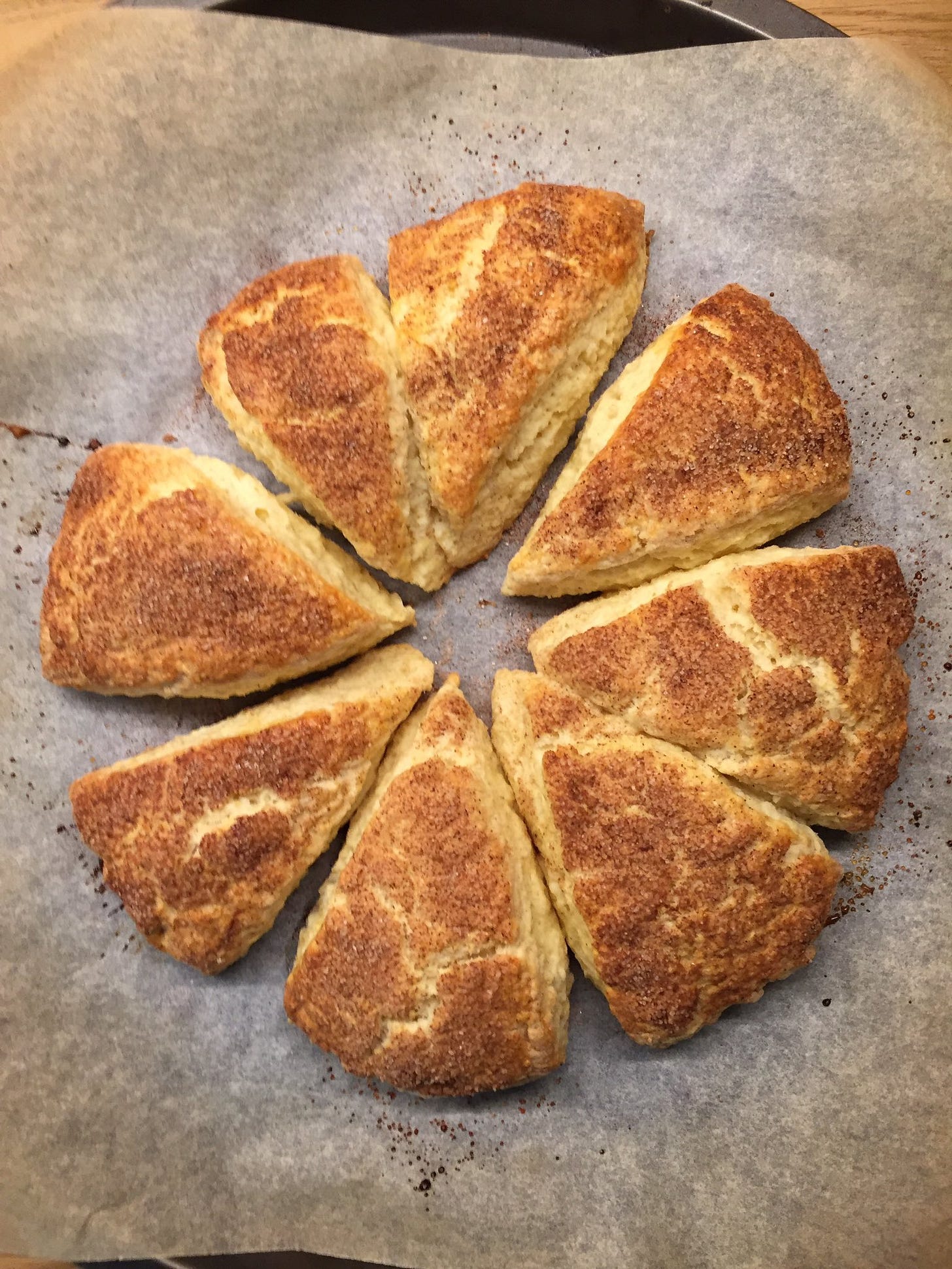


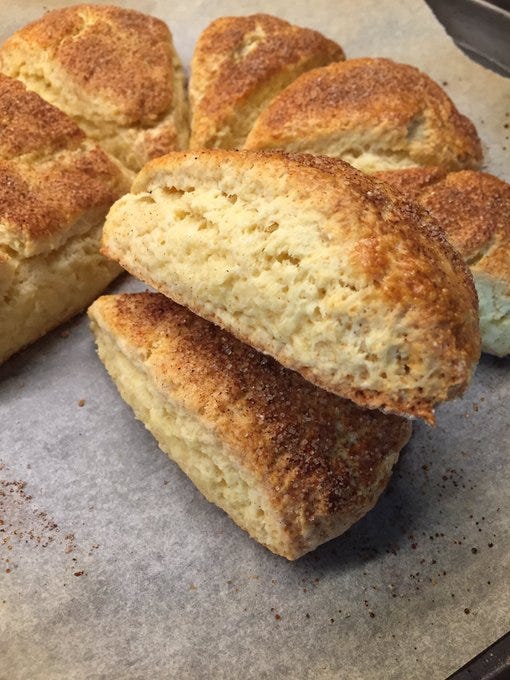
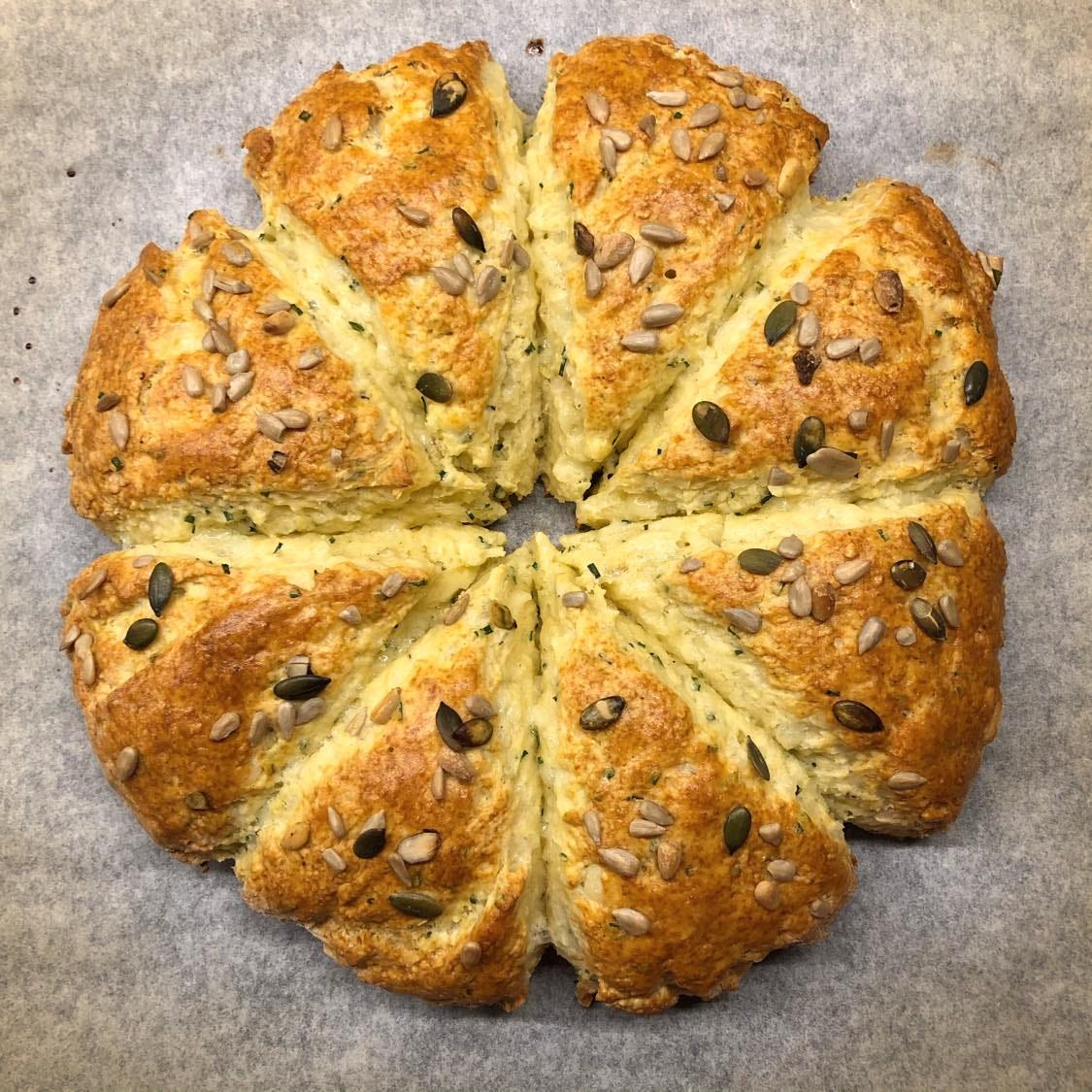

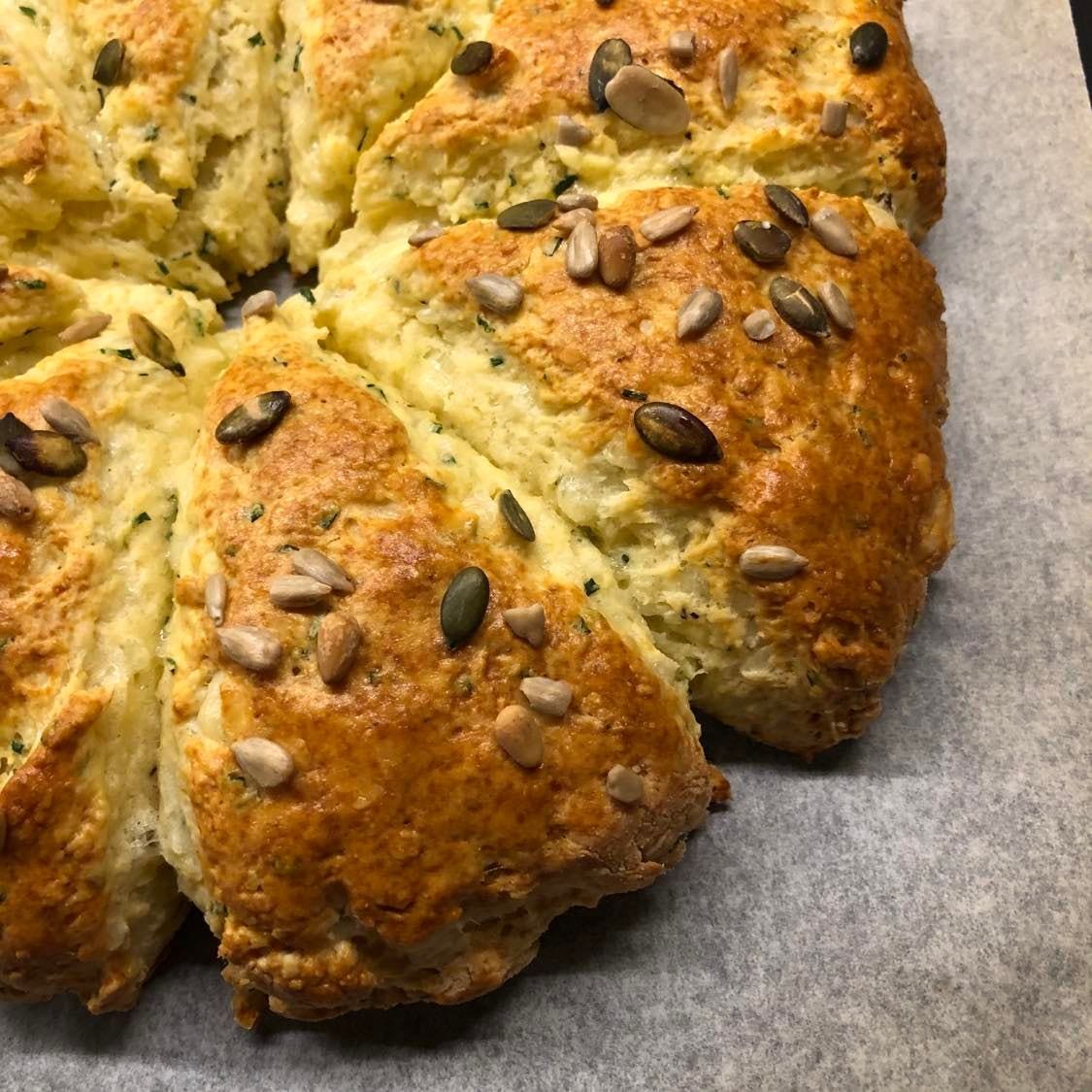
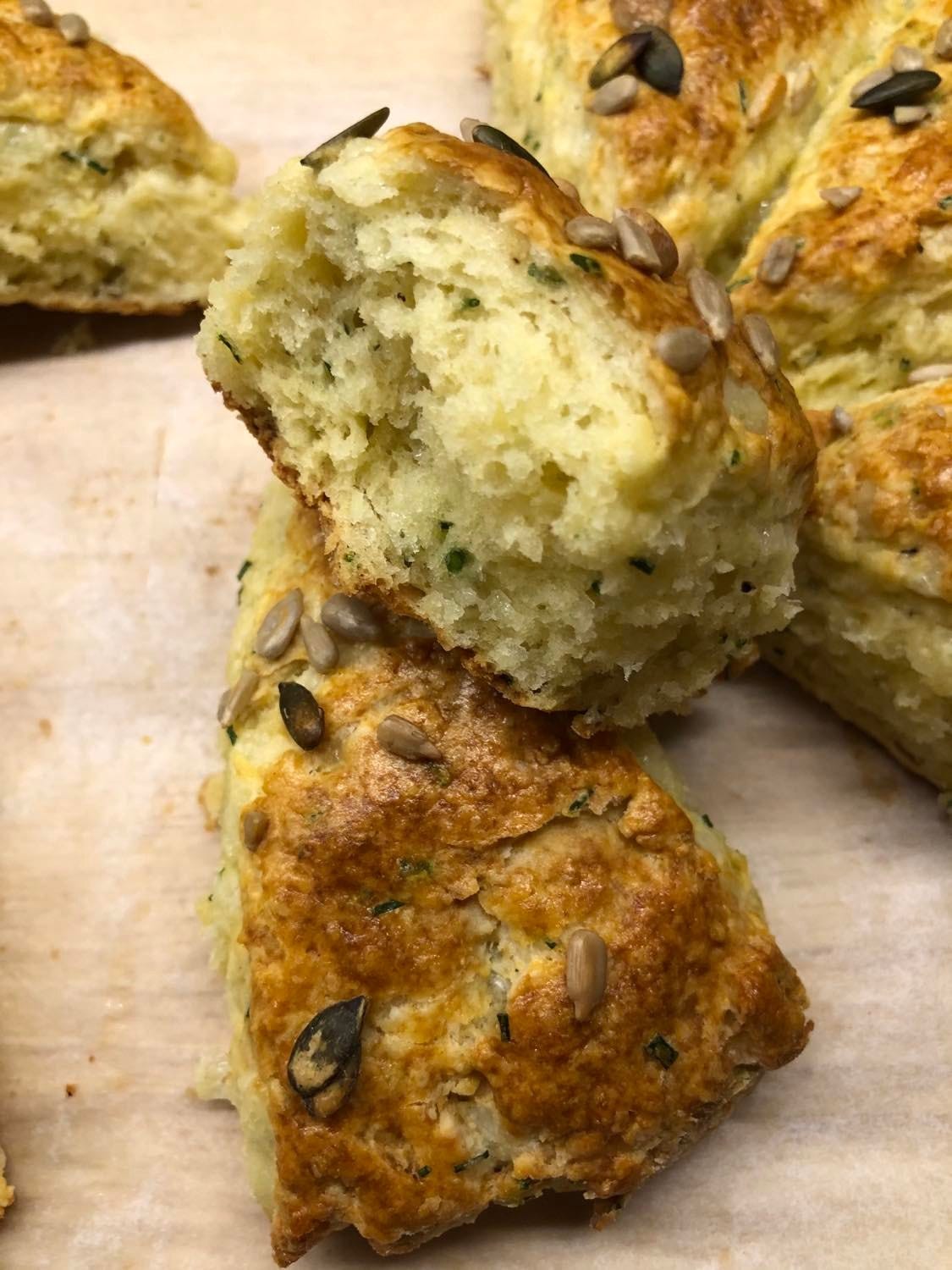
You had me with a great quote from Hunter S Thompson, but TWO recipes for scones (I love both sweet and savory scones) are just icing on the cake!
Love warm scones out of the oven! These look fabulous. We also attempt to make our own clotted cream. I erred in a previous comment. Lather the scone with your favorite jam or jelly and then top with double Devon clotted cream. Warm ,melty and so not French but delicious!